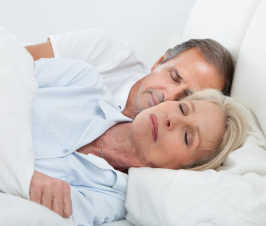Node Smith, ND
A recent study has shown that an hour of bright light inhibits melatonin production in preschoolers for up to 50 minutes after the lights are turned off.1 Melatonin is known as the principle sleep-regulating hormone and is largely responsible for the circadian rhythm of sleep in the body. It is produced by the pineal gland in the brain. Bright light is known to affect melatonin levels.
Back-lit LED screens is affecting melatonin production in children
The bright light of an overhead light or fluorescent light bulbs are not the only light that affects melatonin, but also the light coming from back-lit LED screens that more and more preschoolers are using. The growing body of research on the effects of this “blue-light” on melatonin production has implicated screen time as a significant factor disrupting sleep and circadian rhythm.
Structural differences in children make them more susceptible to effects of light and sleep
The structural differences in the eyes of children, especially young children, may actually make them more vulnerable to the effects of light on sleep and the body’s internal clock. But the research on younger age groups has largely been lacking.
Study looked at 10 healthy children ages 3-5
This study, from CU Boulder, looked at 10 healthy children between the ages of 3 and 5 over a 7- day time span. During the first five days, all children followed a strict bedtime routine to gain a baseline circadian rhythm. This routine helped establish a pattern in their melatonin levels, which were seen to rise around the same time each evening.
Day 6 of the study
On day 6, the researchers visited the children’s homes and simulated a dimly lit environment (basically covered windows and replaced lights with dimmer bulbs). This allowed an assessment of the same environmental amount of light across all the children. Melatonin levels were measured on the afternoon of day 6 at various different times. The following evening, the children were then asked to play or color with magnetic tiles on top of a light table that emits 1,000 lux of light (roughly the brightness of light in a normal bright room) for 60 minutes.
Melatonin measured in saliva after playing on the light table was 88% lower
The melatonin measured in saliva after playing on the light table was 88% lower than the previous evening in the dim room, and the lower levels lasted for at least 50 minutes after the children had stopped playing with the light table. 1,000 lux of light is roughly the same amount of light exposure from a handheld device.
Melatonin helps regulate blood pressure, blood sugar, and body temp
When the light interacts with the retina is sends signals to the brain to lower the amount of melatonin produced. The concern is that at such a young age, this sort of alterations in normal melatonin function – which drives circadian rhythm – could impact sleep health in the future, as well as being able to sleep at night. Melatonin is also helps regulate blood pressure, blood sugar and body temperature.
A follow-up study is already planned that will look at 90 children under a variety of light conditions.
Source:
- Akacem LD, Wright KP, Lebourgeois MK. Sensitivity of the circadian system to evening bright light in preschool-age children. Physiol Rep. 2018;6(5)
 Node Smith, ND, is a naturopathic physician in Portland, OR and associate editor for NDNR. He has been instrumental in maintaining a firm connection to the philosophy and heritage of naturopathic medicine among the next generation of docs. He helped found the first multi-generational experiential retreat, which brings elders, alumni, and students together for a weekend camp-out where naturopathic medicine and medical philosophy are experienced in nature. Four years ago he helped found the non-profit, Association for Naturopathic ReVitalization (ANR), for which he serves as the board chairman. ANR has a mission to inspire health practitioners to embody the naturopathic principles through experiential education. Node also has a firm belief that the next era of naturopathic medicine will see a resurgence of in-patient facilities which use fasting, earthing, hydrotherapy and homeopathy to bring people back from chronic diseases of modern living; he is involved in numerous conversations and projects to bring about this vision.
Node Smith, ND, is a naturopathic physician in Portland, OR and associate editor for NDNR. He has been instrumental in maintaining a firm connection to the philosophy and heritage of naturopathic medicine among the next generation of docs. He helped found the first multi-generational experiential retreat, which brings elders, alumni, and students together for a weekend camp-out where naturopathic medicine and medical philosophy are experienced in nature. Four years ago he helped found the non-profit, Association for Naturopathic ReVitalization (ANR), for which he serves as the board chairman. ANR has a mission to inspire health practitioners to embody the naturopathic principles through experiential education. Node also has a firm belief that the next era of naturopathic medicine will see a resurgence of in-patient facilities which use fasting, earthing, hydrotherapy and homeopathy to bring people back from chronic diseases of modern living; he is involved in numerous conversations and projects to bring about this vision.

















